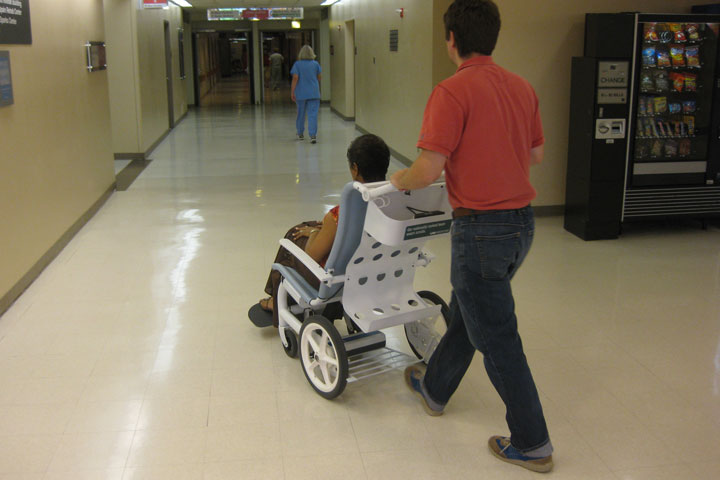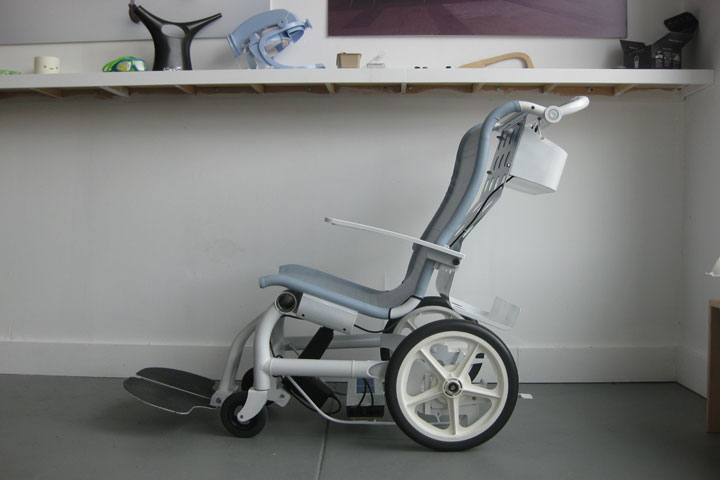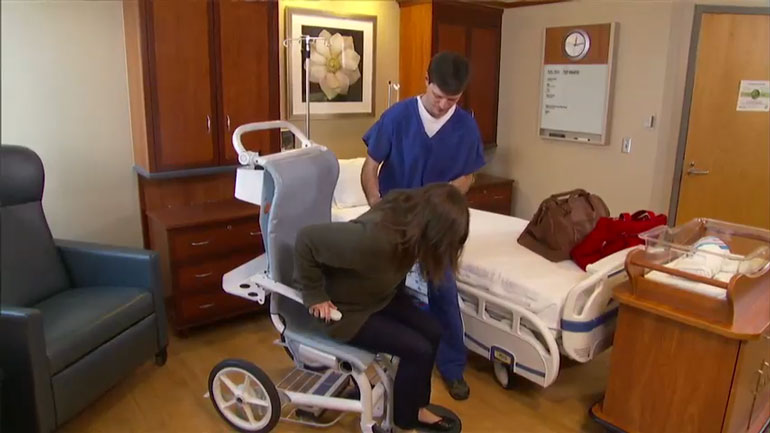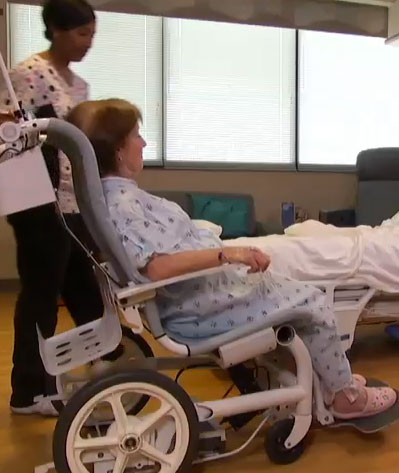Patient Transport Chair
A patient transport chair with a battery powered sitting and standing assist mechanism. The chair is both comfortable to sit in and to push.
More information about the chair and the company that formed to sell the design can be seen at movimedical.com
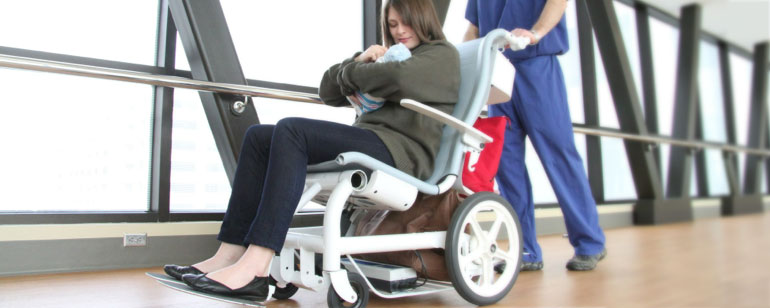
Project Background
Transport chairs are wheelchairs that are meant to be pushed by another person, rather that the person sitting in the chair. Hospitals do not allow patients to walk when they are being transferred between two places in the hospital, so a transporter or nurse pushes the patient to where they need to go.
Most hospitals use a standard collapsable sling wheelchair for these transports, which means there is an entire department in every hospital (the transporters) that push people around the hospital using handles that are not meant for pushing.
-
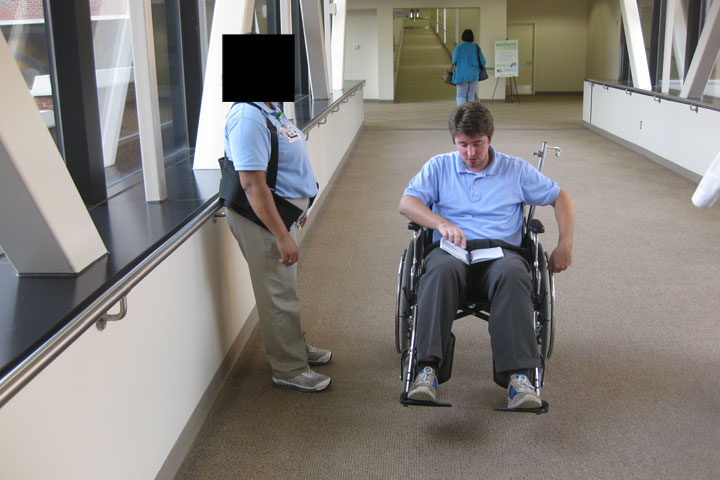
-
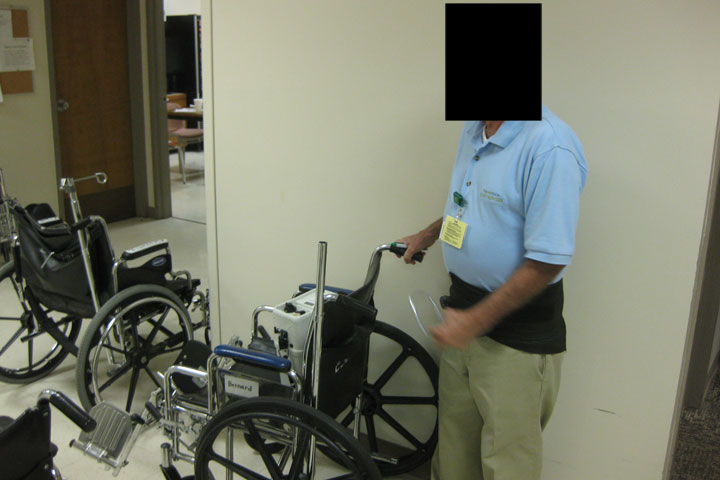
-
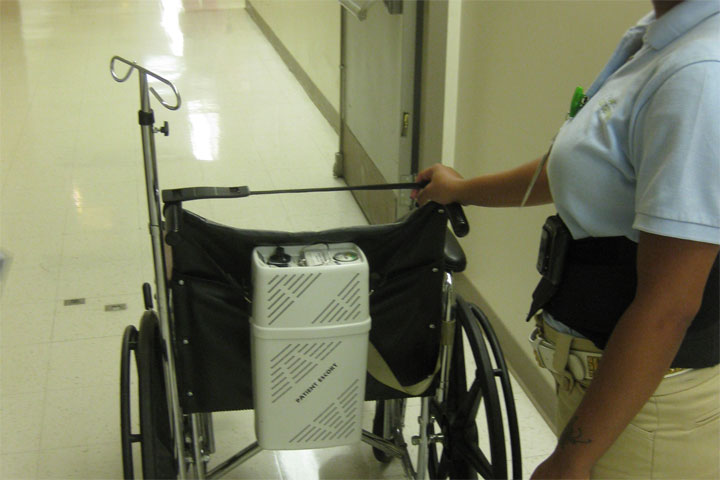
-
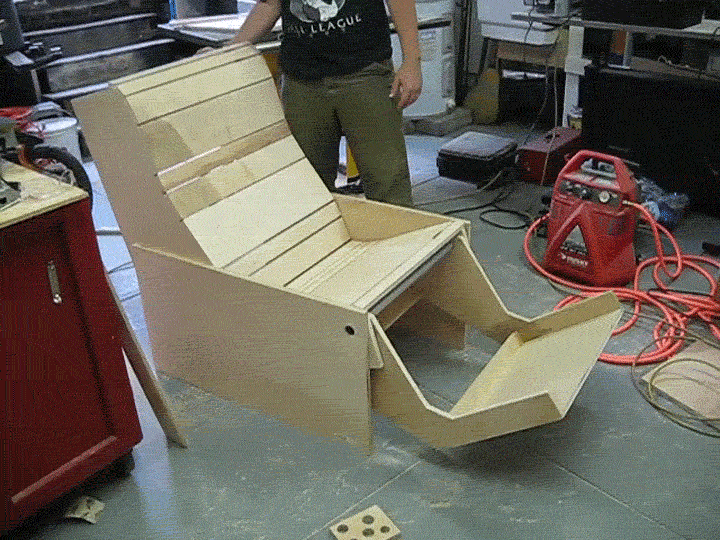
-
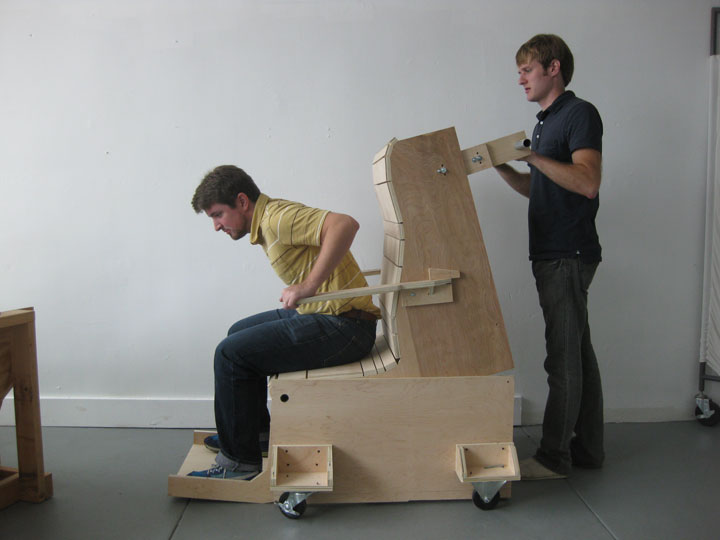
-
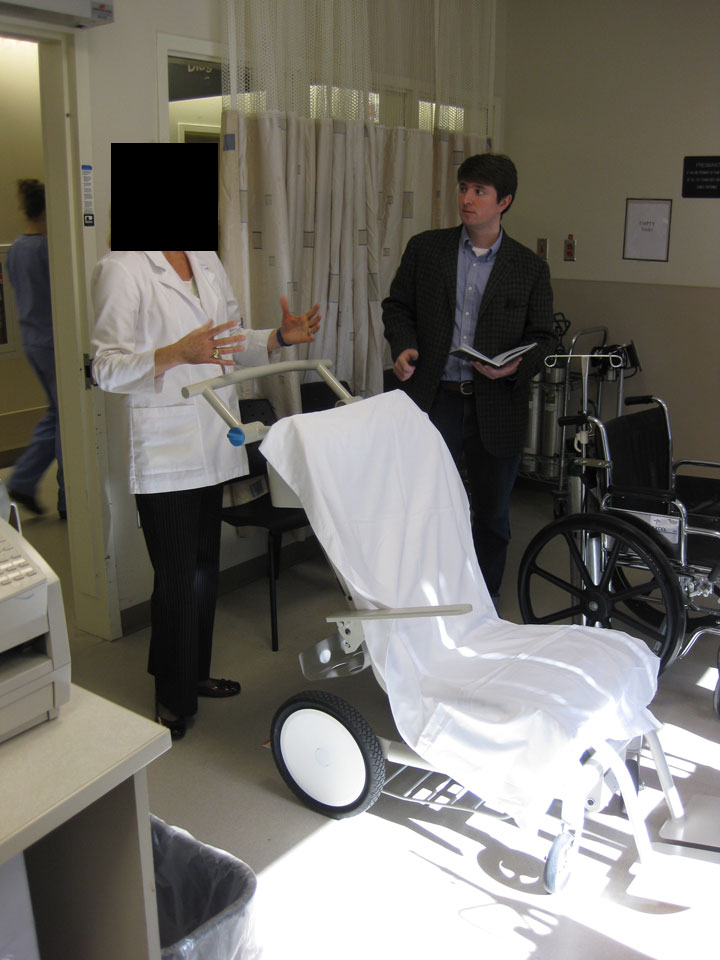
-
Project Details
This was a multi-year project that began with thorough design research. We spent days shadowing a team of transporters to see how they used their current transport chairs and to hear about their ideas of the perfect transport chair. Most transports are performed with a standard foldable wheelchair, with a sling seat and small handles.
From our time with the transporters, it became clear that the current chair design was uncomfortable both for the patient and the staff. We also noticed that transports often involved carrying extra items, such as luggage, a large patient chart or an oxygen tank. We saw very creative solutions for taking these items along for the ride, but most all of the current solutions were obtrusive for the patient. Another awkward moment occurred when the transporter needed to bend in front of the patient to adjust the feet rests.
Our initial concept was to create an integrated lift mechanism into the chair. To confirm that we were on the right track, I built a very rough wooden model of the chair, to test the pivot point and the starting and ending angles of the seat. Although the wooden model doesn't look comfortable, the Grandjean curve made it quite pleasant on the back.
From that point, finer and finer prototypes were created and tested. With each iteration the design became closer and closer to the final production design.
